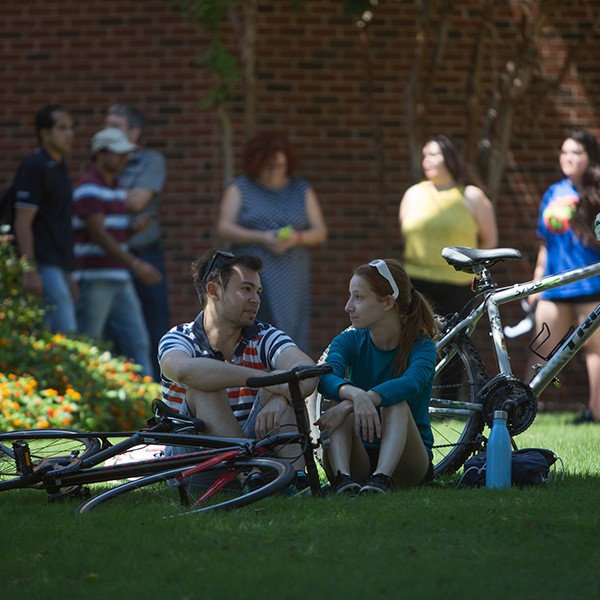SULPHUR - The University of Oklahoma Board of Regents today approved a FY20 budget that keeps undergraduate tuition and fees flat for a second consecutive year and provides faculty and staff salary increases. The recommended staff salary program will be the first for the Norman campus in five years. Tuition has remained flat since 2017.
“We presented to our Board of Regents an annual budget that is financially sound and makes new investments in the pursuit of our University’s mission. The progress this University has made in the past year is significant and our faculty and staff deserve recognition for their focus and commitment to putting students first as we have worked toward financial health,” said Interim President Joseph Harroz Jr.
“Students are the biggest winner in this year’s budget as we once again held the line on tuition and fee increases. This was achievable in part because of increased state support. To that end, we are grateful to Governor Stitt and the Legislature for investing in higher education this past session. Additionally, the financial discipline of our administration has produced savings which support our efforts to make sure the excellence of an OU education is accessible and we have the resources necessary to support student success.” said Board of Regents Chairman Leslie Rainbolt-Forbes.
Tuition and mandatory fees will remain flat for the second year in a row with a realization of recurring savings of $50 million at the Norman campus. Undergraduate in-state tuition remains at $159.60 per credit hour. Non-resident tuition will remain at $512.70 per credit hour. Tuition and fees at the Health Sciences Center will increase for five professional programs, in the setting of rising healthcare costs, which were alleviated through a $9.5 million in overall savings. Tuition and mandatory fee increases require approval by the Oklahoma State Regents for Higher Education.
“A great comprehensive, public research University provides excellence at a price that does not exclude the most talented students because of their economic circumstance. We continue to make new investments in need-based scholarships, notably the Crimson Commitment. OU will strive to be both excellent and affordable for in-state students by controlling costs and our tuition,” Harroz said.
The recommended OU FY20 budget is $2.02 billion and includes $983 million for the Norman campus and $1.04 billion for the HSC campus. The budget is designed to balance resource constraints with short- and long-term needs. The new budget includes a recommendation for a 3% salary program on average for eligible Norman staff, as well as compensation for staff at the HSC. In addition to a 2.6% annualized faculty salary increase on the Norman campus from January 2019, it also incorporates support from the Legislature for an additional 2.2% annualized faculty salary increase on the Norman campus and an annualized increase at HSC. The most recent faculty salary increases were made possible in the last legislative session through increased higher education appropriations. Both are proposed for October. A recommendation to increase stipends for graduate students and a reduction of fees for research-oriented graduate programs reflects OU’s continued emphasis on growing its research activity to support Oklahoma’s economy. OU Human Resources is determining the timeline and guidelines for instigating the process.
“It is an optimistic sign that the state of Oklahoma is making new investments in higher education. The appropriations directed to higher education were stipulated for faculty salaries. Coupled with the faculty raise pool we implemented at the beginning of this year, there is significant progress toward the goal of paying competitive salaries for our talented and dedicated faculty. Attracting nationally ranked faculty is essential to secure new research funding and help the Oklahoma economy thrive,” Harroz said.
Created by the Oklahoma Territorial Legislature in 1890, the University of Oklahoma is a doctoral degree-granting research university serving the educational, cultural, economic and health-care needs of the state, region and nation. The Norman campus serves as home to all of the university’s academic programs except health-related fields. The OU Health Sciences Center, which is located in Oklahoma City, is one of only four comprehensive academic health centers in the nation with seven professional colleges. Both the Norman and Health Sciences Center campuses offer programs at the Schusterman Center, the site of OU-Tulsa. OU enrolls almost 32,000 students, has more than 2,800 full-time faculty members, and has 21 colleges offering 172 majors at the baccalaureate level, 156 majors at the master’s level, 81 doctoral-level majors and 54 graduate certificates. In FY19 the university’s annual operating budget is $2.05 billion. The University of Oklahoma is an equal opportunity institution.



